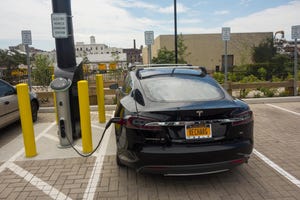5G is growing fast, but don't forget indoor coverage – report
The latest edition of the Ericsson Mobility Report forecasts that 5G subscriptions will reach 5.3 billion by the end of 2029.

5G take-up is continuing to rise around the world despite continued economic challenges and geopolitical unrest in some markets, according to the November 2023 edition of the Ericsson Mobility Report. However, growth is still being driven by four key regions, with China and India in the lead, while mobile operators are still not providing decent enough indoor coverage – something that is proving to be a major turnoff for mobile customers.
First, some stats. The report certainly points to rapid subscriber growth, with almost one-in-five of all global mobile subscriptions expected to be 5G subscriptions by the end of 2023. The total number of 5G subscribers is forecast to increase by 63% or 610 million this year, bringing the global total to 1.6 billion. Ericsson noted that this is about 100 million more than previously predicted.
In the six years between the end of 2023 and the new upper timeline of 2029, global 5G subscriptions are forecast to increase by more than 330%, from 1.6 billion to 5.3 billion. 5G coverage is forecast to be available to more than 45% of the global population by the end of 2023 and 85% by the end of 2029. North America and the Gulf Cooperation Council are expected to have the highest regional 5G penetration rates by the end of 2029, at 92%.
As summarized by Peter Jonsson, executive editor of Ericsson Mobility Report, "what we see is that there is still a strong 5G mobile subscription uptake despite the macroeconomic challenges in different regions."
Jonsson noted that some 80% of the growth is generated by four regions: China, India, North America, and Western Europe. Indeed, China accounts for a third of the growth in 2023, "primarily driven by the continued deployment of 5G, which is now covering 95% of the population in China, in combination with the proliferation of more and more 5G smartphone models," he said.
Meeting the indoor challenge
In line with recent editions, the November 2023 report also confirms enhanced mobile broadband, fixed wireless access (FWA), gaming and AR/VR-based services as the most common early consumer use cases for 5G.
However, poor indoor coverage remains an ongoing problem. "We spend over 80% of our time indoors, and it's really important to have good connectivity. 5G is a really good thing for that," Jonsson said.
Steven Davis, strategic marketing director at Ericsson, noted that although most network traffic is generated indoors, "so far, most of the 5G mid-band deployment has been to support the coverage and capacity outdoors, supporting the mobile broadband services and fixed wireless access."
Davis pointed to a recent Ericsson ConsumerLab study that highlighted the correlation between network performance in key venues and service provider churn.
"The research found that users who encountered connectivity problems at event venues and airports, were actually three times more likely to churn in the next six months compared to other users. So there's a real importance for the users to have that performance where they need it and where they're generating the traffic in some of these key indoor locations," he said.
Davis noted that in the US, for example, the majority of indoor deployments today are dominated by distributed antenna systems (DAS) and still based on 4G.
The report emphasized that upgrading the indoor experience is required to help ensure customer loyalty, and cites 5G mid-band TDD and indoor small cells as the optimal solutions for significantly improving network performance in these locations.
"There is a clear need for investment in key locations, especially airports which have some of the worst performance data, alongside being a key location driving churn," the report added.
RedCap is coming
Overall, around 280 5G networks have been launched worldwide, compared to 822 4G networks. While the majority of networks deployed so far are 5G non-standalone, Ericsson observes that an increasing number of operators are deploying 5G standalone (SA), although only around 40 service providers have deployed or launched 5G SA in public networks to date.
In terms of IoT, the total number of cellular IoT connections is forecast to reach around 3 billion at the end of 2023. Broadband IoT (4G/5G) is forecast to reach around 1.6 billion connections in 2023, and is the technology that is expected to continue to connect the largest share of cellular IoT devices through to 2029.
Ericsson also noted that Broadband IoT will be further strengthened by the introduction of reduced capability (RedCap) 5G New Radio (NR) devices. "The first pre-commercial RedCap-based modules will soon be available, and commercially available devices are expected during 2024," the report said.
About the Author(s)
You May Also Like












